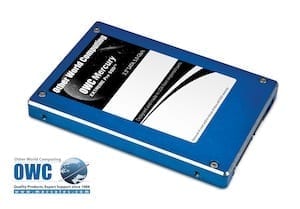 If you upgrade a Mac to an SSD drive – having good management of your files is important where you use an additional drive or drives to have capacity for your photo, music, video libraries, etc. With the relatively small sizes of SSD drives, they can fill up with data fast; but the performance benefits of SSD are undeniable.
If you upgrade a Mac to an SSD drive – having good management of your files is important where you use an additional drive or drives to have capacity for your photo, music, video libraries, etc. With the relatively small sizes of SSD drives, they can fill up with data fast; but the performance benefits of SSD are undeniable.
If you’ve been following our blog since the beginning, we’ve given several tips on relocating these types of files off your internal storage on onto external storage solutions. Today’s modern operating systems make this pretty easy.
For those audiophiles out there, an iTunes library can quickly become an overwhelming size. Back in March, we showed you how to move your iTunes library to an external hard drive such as the Mercury On-the-Go Pro.
Photography enthusiasts will also find their pictures taking up more and more hard drive space. You can also move your iPhoto library to an external drive to keep your primary drive lean and operating at top speeds.
My basic rule of thumb to follow is to keep the Operating System and your applications themselves on the main, internal hard drive while storing the files, documents, pictures, movies, music, etc. on the separate drive. By doing so, you can even use a 64GB SSD for boot and application performance benefits WHILE maintaining access to extensive file libraries that can’t all fit onto an SSD.
Check out OWC’s full selection of SSD Drives and External Hard Drive Solutions to find the fit that’s right for you.








What this blog post suggests is good, but very difficult for some Mac applications that insist on keeping their data files on the boot drive (usually somewhere in the Library in the user’s Home folder).
I believe this should be discouraged. Developers should afford users the ability to store their data files on other volumes.
RB, excellent question.
Under Time Machine Options you have the ability to tell time machine which drives to back up and which not to.
Your best bet would be to keep a clone of the SSD on one external HD partition and use a second partition of the same drive to use time machine.
For example, let’s say you have two NewerTech miniStack external storage solutions in addition to your MBP with a 64GB SSD installed. Further, let’s say one is 250GB, the other is 500GB. You can set the 250GB miniStack up to be your primary storage drive to hold your iTunes library, iPhoto library, documents, etc. Then take the 500GB miniStack and use Disk Utility to setup two partitions: One that is 64GB in size, and the other can be the remaining volume.
With a program such as Data Backup 3 (a copy is provided with all OWC storage solutions) you can setup a scheduled clone of the SSD. I’d suggest weekly, just to make sure all the programs and application updates are backed up in total to protect against an SSD failure. As the SSD is being setup to only have your applications and OS on it, not much is changing on that drive week to week unless you’re an avid collector of new programs.
Then use the larger partition and setup Time Machine to backup the 250GB ministack to the larger partition on your 500GB miniStack.
Now you’re covered if any single drive in your system fails.
What about back up? If I move my music and photos to external drive do I lose the time machine backup and have to come up with a different backup strategy for those files?
Thanks for the good article. I would love to have a SSD but I am a college student and I used all my spending money on getting my MBP. I guess I’ll just have to wait until I get a real job. ; )
Sounds like a great setup! Thanks for sharing.
I have a 120GB OCZ Vertex drive in my early ’09 Mac Mini along with 4GB of OWC RAM, and I have to say it’s a fantastic little workstation. I have my files on a 1TB HDD in a newer mini-stack, but it’s not actually hooked up to the mini, it’s hooked up to a G5 that was my prior workstation and is now my media server and NAS.
The performance benefits of SSD drives are pervasive throughout the entire computing experience. Every disk access is orders of magnitude faster, and while that might only mean the difference between tens of milliseconds as opposed to hundreds of milliseconds in some instances, it does add up. Al tasks are noticeably snappier, and some tasks are breathtakingly quick. I’m already to the point where I consider the price of the SSD as part of the cost of setting up a new mac.